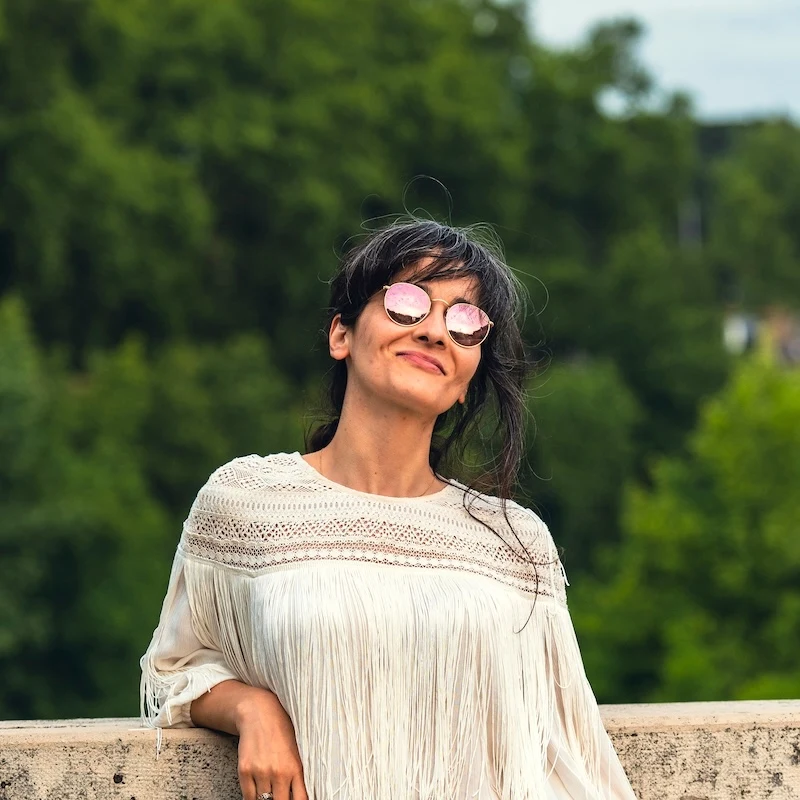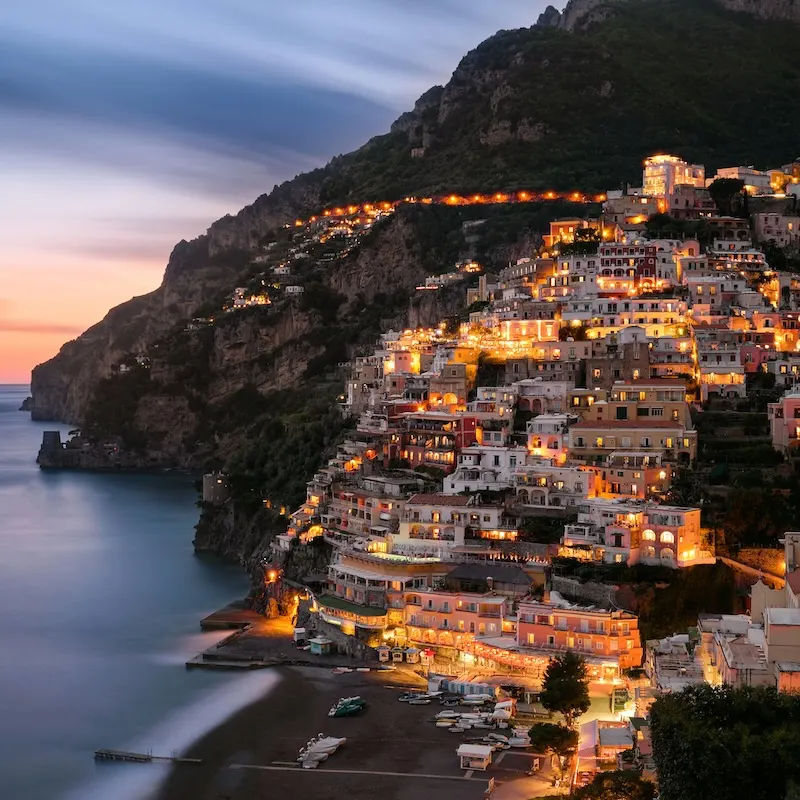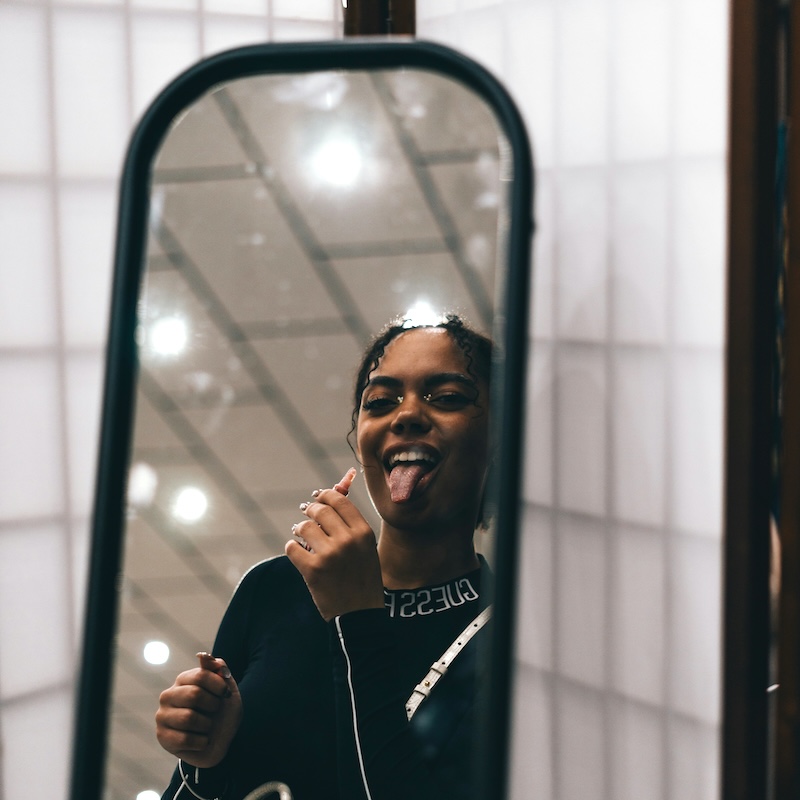27 Hidden and Iconic Things to Do in Vienna in 2025
Sarah Pardi - August 5, 2025
Home > Travel Ideas & Inspiration > 27 Hidden and Iconic Things to Do in Vienna in 2025
Share this post
Half the fun of traveling is planning what to do on your upcoming adventure - like to the historic city of Vienna.
In this guide, we’ll take a look at 27 things to do in Vienna – Austria’s capital that balances rich imperial history with a lively, modern spirit.
Whether you’re a foodie, history enthusiast, or like to explore hidden sites off the beaten path, there’s something on this list for you!
Vienna sites you can't miss
There are a few quintessential places that every traveler should add to their list of things to do in Vienna. Even if it’s your first time, these destinations will set the stage for understanding Vienna’s unique charm.
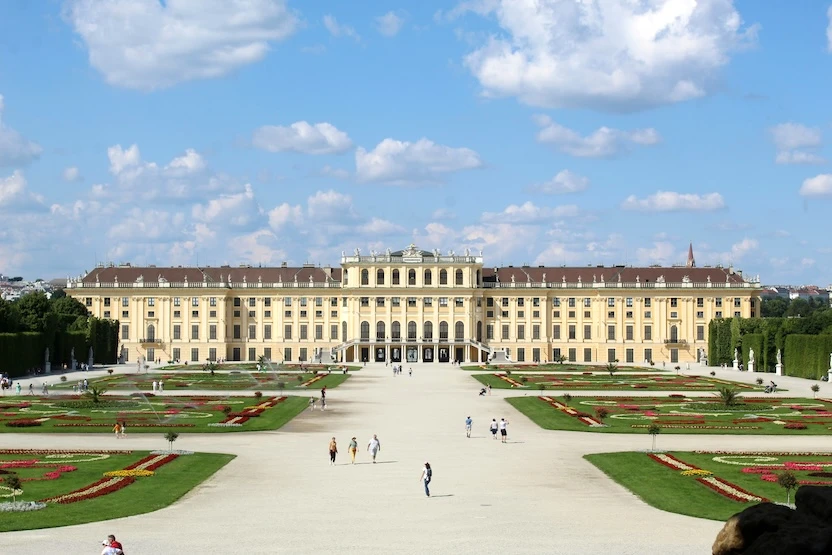
1. Schönbrunn Palace
A Vienna must-visit is the Schönbrunn Palace, once home to the Habsburg monarchy. Roam through the grand halls, stroll the landscaped gardens, and imagine what life was like as Austrian royalty.
The palace, which is ornately decorated with incredible architectural elements, chandeliers, and art, offers gardens, staterooms, and private apartments for you to explore at your leisure.
Additionally, there are cafes and restaurants onsite in case you need a mid-visit pick-me-up.
How to visit the Schönbrunn Palace
The museum is open daily and you’ll need tickets to visit. These tickets have fixed admission times and can be purchased online (which is recommended). There are a few different audio guides available for an additional charge as well.
Where is the Schönbrunn Palace?
The palace can be found at Schönbrunner Schloßstraße 47, 1130 Vienna.
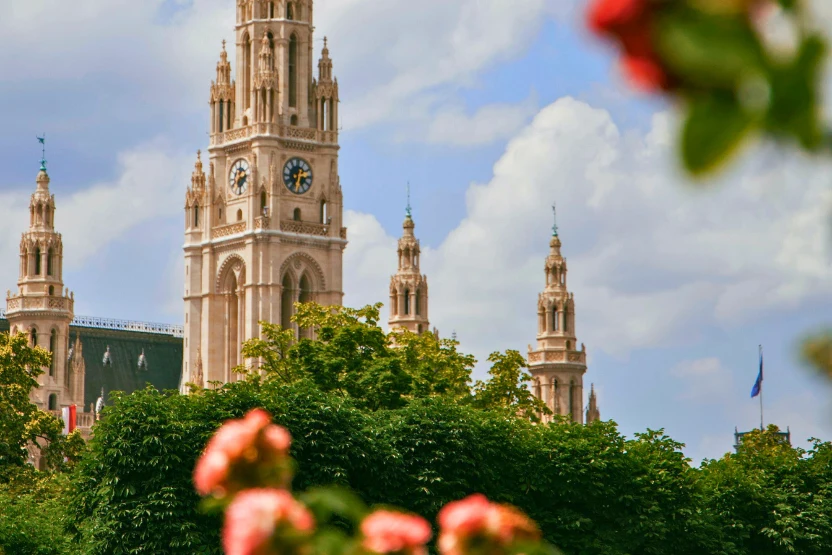
2. St. Stephen’s Cathedral (Stephansdom)
At the heart of Vienna's city center, this Gothic marvel is unforgettable. With its intricately tiled roof and wooden attic space, you’ll be transported to another time as you take in Stephansdom's beauty. As a bonus, there’s a breathtaking city view for anyone who braves the climb up its South Tower (be warned, it's 136.4 meters up!).
St. Stephen’s Cathedral is also home to the catacombs, an underground burial site with labyrinthine corridors that visitors can explore.
How to visit Stephansdom
The church is open daily and free to enter, but some areas are ticketed (such as the Catacombs). Additionally, closures may happen when events are in progress.
Where is St. Stephen’s Cathedral?
You can find the cathedral at Stephansplatz 3, 1010 in Vienna, Austria.
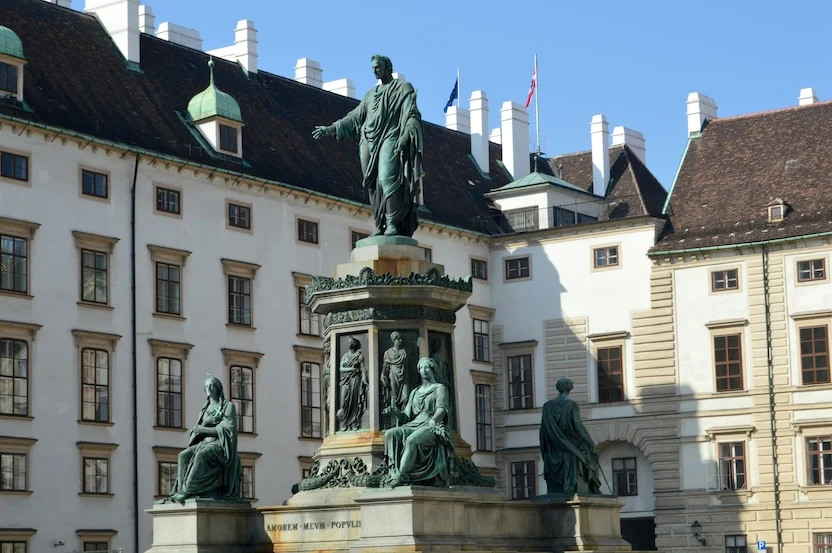
3. The Hofburg Palace and the Sisi Museum
The Hofburg was the power seat of the Habsburg dynasty, and the Sisi Museum inside offers a glimpse into Empress Elisabeth’s life.
You’ll see historic snapshots through the belongings of Empress Sisi, such as fans and gloves, beauty tools, a traveling medicine chest, and more. Make sure not to miss the Kaiserliche Schatzkammer Wien (the Imperial Treasury) to view sparkling imperial jewels!
How to visit the Hofburg Palace and Sisi Museum
The palace is open daily and requires admission tickets. These tickets have timed entry, so plan accordingly.
Where is the Hofburg Palace and Sisi Museum?
The Hofburg Palace is located at Michaelerkuppel, 1010 in Vienna, Austria.
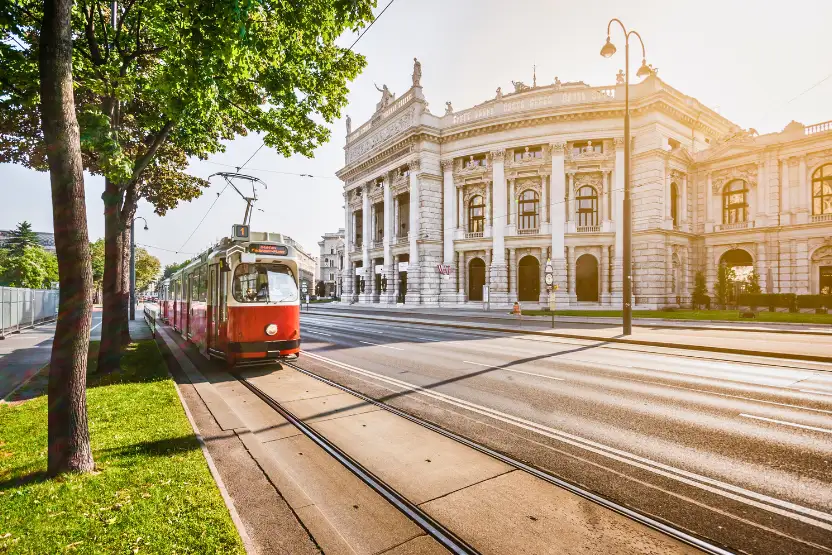
4. Ringstrasse: Vienna’s grand boulevard
Circling the inner city, the Ringstrasse is a ring road around the historic city center that is entirely walkable (it’s 5.3 kilometers long, which is just over 3 miles).
Lined with iconic buildings like the Rathaus and Burgtheater, it’s perfect for a tram ride or leisurely walk and will give you a great visual overview of Vienna’s architecture.
How to visit the Ringstrasse in Vienna
The Ringstrasse is a large boulevard that is open to the public at any time.
Where is the Ringstrasse?
You can start the Ringstrasse at any location, near the city center. Many travelers begin their walk in front of the Opera House at the Opernring, located at Opernring 2, 1010.
Vienna’s unique museums and art stops
Vienna is an art lover’s paradise, with a museum for every passion – from Renaissance masterpieces to quirky modern art and more. Below are a few must-see attractions while filling up your Vienna itinerary.
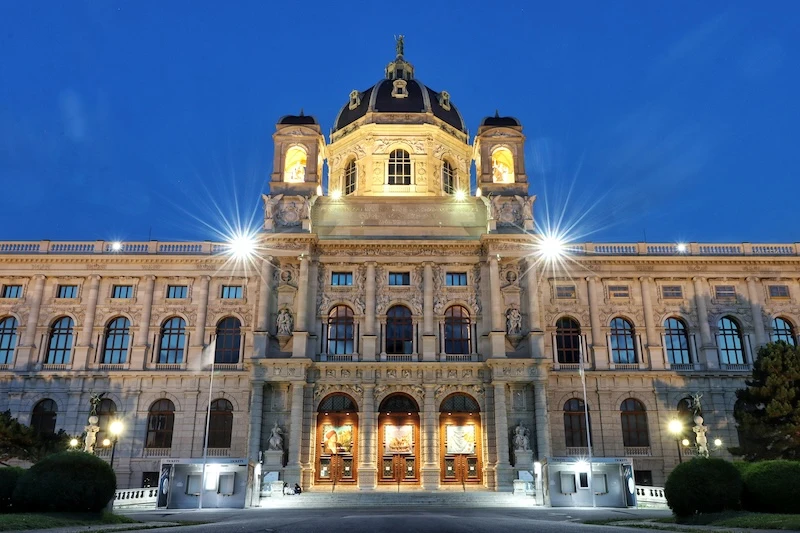
5. Kunsthistorisches Museum
Housing works by Caravaggio, Raphael, and more, Kunsthistorisches Museum is a can’t-miss stop for classic art enthusiasts. If you like to see a little bit of everything (from ancient Egypt to the late 18th century), this museum is a must.
It even holds the world’s largest Bruegel collection!
How to visit the Kunsthistorisches Museum
The museum is open daily and tickets are required. The tickets do not have timed entry, so you can visit any hour you’d like, as long as it’s on the day the ticket is valid. Tickets are available online.
Where is the Kunsthistorisches Museum?
You can find the museum at Neue Burg, Heldenplatz, 1010 in Vienna, Austria.
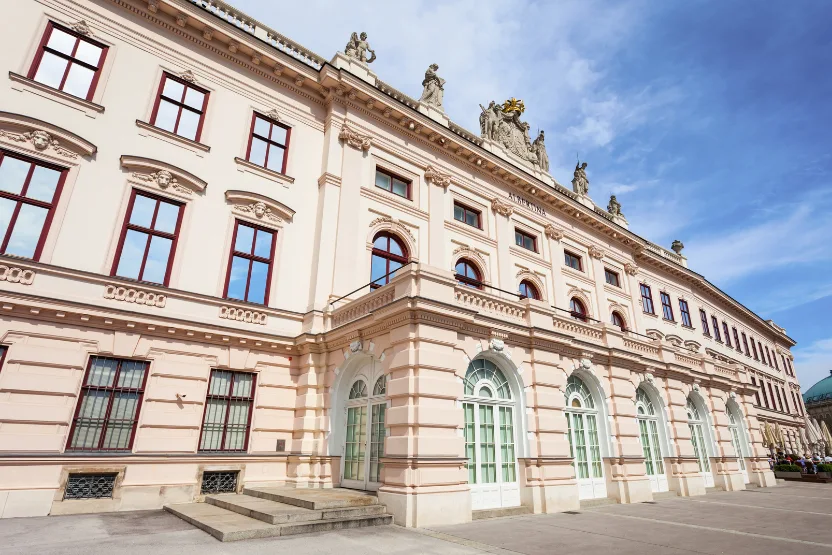
6. Albertina Museum
If you’re curious about both historical and contemporary works, Albertina hosts a blend of paintings, drawings, and graphic art, including exhibitions by Picasso and Monet.
One of the most notable features of the Albertina is a celebrated printing room that contains upwards of one million prints from old art masters.
How to visit the Albertina Museum
The museum is open daily and you’ll need tickets to enter, which you can buy online ahead of time. These tickets do not have time slots.
Where is the Albertina Museum?
The Albertina Museum is in Vienna, Austria at Albertinaplatz 1.
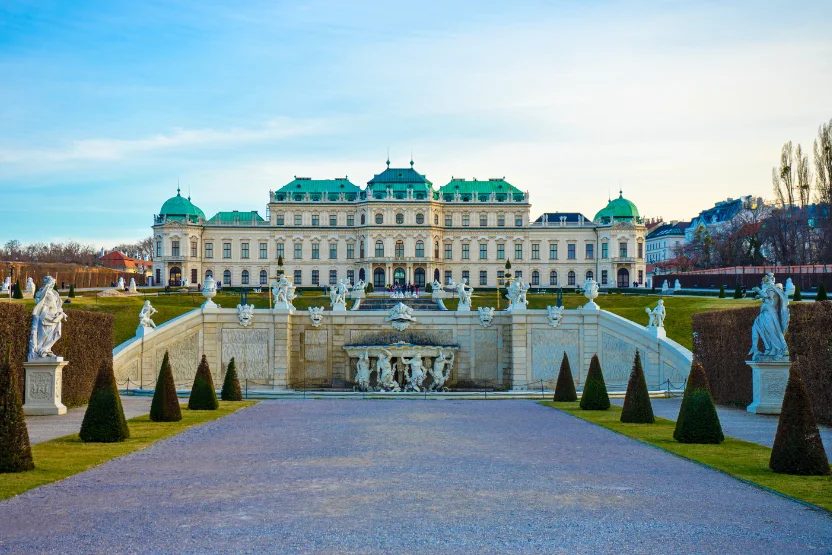
7. The Upper Belvedere Museum
Containing over 800 years of art history, you’ll see works from Schiele, Funke, Van Gogh, and even the most famous Klimt, “The Kiss.”
Additionally, this museum is inside a Baroque palace, making the entire visit visually enticing from floor to ceiling.
How to visit the Upper Belvedere Museum
You’ll need tickets to enter the Upper Belvedere and it’s open every day of the week except Tuesday. You can get your ticket online ahead of time.
Where is the Upper Belvedere Museum?
You can find it, and Klimt’s “The Kiss” at Prinz Eugen-Straße 27, 1030 in Vienna.
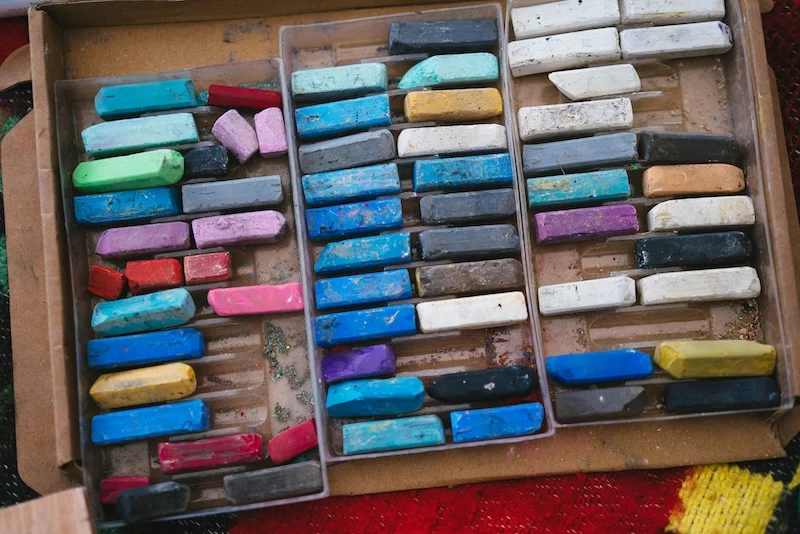
8. The Faelschermuseum
For a visit unlike anything else, visit the Faelschermuseum: Museum of Art Fakes. Learn the history of art forgery through stories of deception and intrigue in the world’s only art forgery museum.
This Austrian museum includes genuine works from notorious art forgers throughout history. You’ll learn lesser-known facts about art and crime, making it one of the more unique experiences to add to your Vienna itinerary.
How to visit the Faelschermuseum (Museum of Art Fakes)?
The Faelschermuseum is open daily, but hours vary so make sure to check ahead of time. You will need tickets in order to visit the Museum of Art Fakes, which can be purchased online.
Where is the Faelschermuseum?
The Museum of Art Fakes is located in Vienna, Austria at Löwengasse 28 (via a vis Hundertwasserhaus), A- 1030.
Unique places to go in Vienna
When it comes to things to do in Vienna, these hidden gems reveal the city’s charm in ways that popular sights do not.
From cemeteries to unique architecture, these lesser-known spots are sure to add a sense of intrigue to your trip to Vienna.
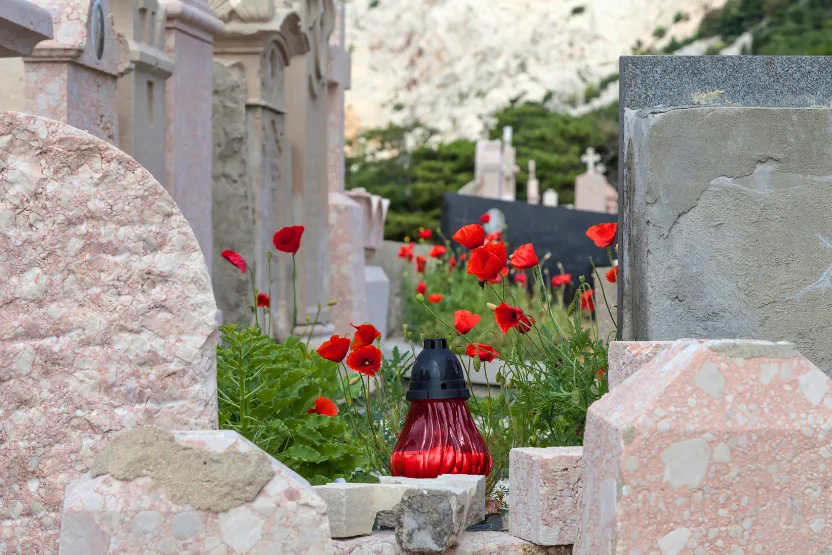
9. Friedhof der Namenlosen: Cemetery of the Nameless
For a reflective experience, the Cemetery of the Nameless honors unidentified souls lost to the Danube River. From 1840 to 1940, unidentified bodies washed up on the shore of the Danube because of a water vortex (this no longer takes place).
This cemetery is unique in that the plots are nameless and each is a victim of the Danube River. The other unique part of the cemetery is that it doesn’t look like a traditional cemetery. It is mostly large trees and overgrown vegetation.
How to visit the Cemetery of the Nameless
Tickets aren’t required, and you can enter on foot. Keep in mind that entry is only allowed during daylight; visits after dark are prohibited.
Where is the Cemetery of the Nameless?
It is located in Vienna, Austria at Alberner Hafen, 1110.
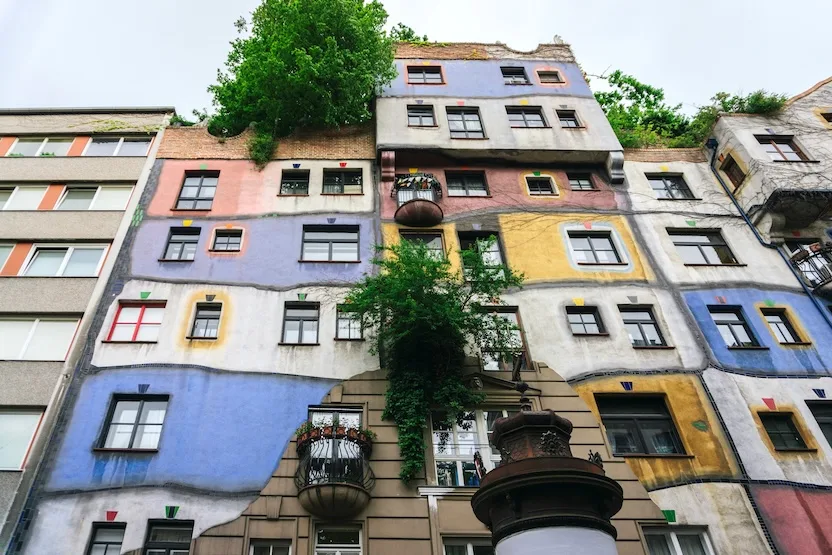
10. Hundertwasser Village
Designed by artist Friedensreich Hundertwasser, Hundertwasser Village is a playful shopping center open 365 days a year and free to enter. Across from Hundertwasser Village is the famous Hundertwasserhaus (pictured above) – also designed by Hundertwasser.
The Hundertwasserhaus is a housing complex with bright colors, uneven floors, and lush rooftop gardens that house native plant life, attracting native fauna.
The Hundertwasserhaus itself is not open to the public, as it’s a private residence, but you can look at it from the Hundertwasser Village –while you grab a quick coffee and snap a few photos.
How to visit Hundertwasser Village
This shopping center is open 365 days a year and is free to enter. Grab a coffee and enjoy this quirky, artistic feat.
Where is the Hundertwasser Village?
It is in Vienna, Austria at Kegelgasse 37-39, 1030.
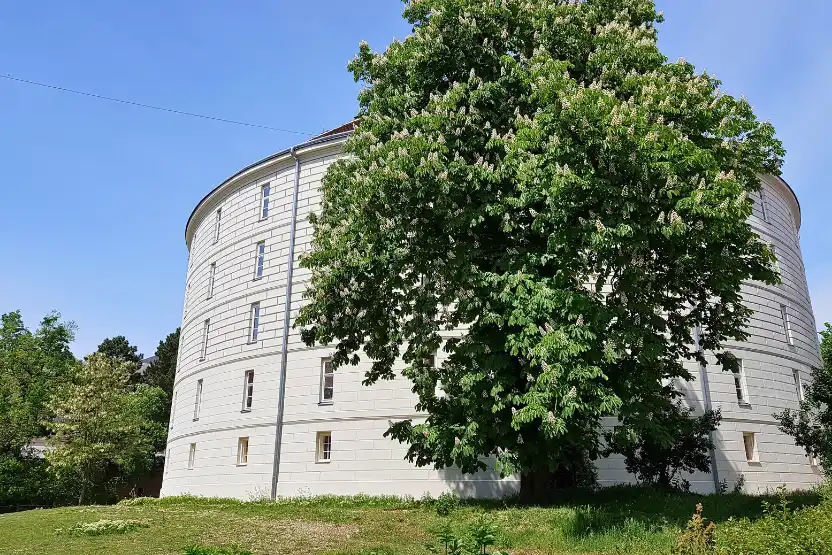
11. Narrenturm
The Narrenturm is an 18th-century asylum that’s now a museum of medical history. Its circular architecture and curious exhibits make it a memorable visit.
The Narrenturm has a rich, complex history. It was the first institution in Europe intended to exclusively treat patients with mental disorders.
Today, the building is owned by the University of Vienna and houses a pathological-anatomical collection, historical medical devices, and educational materials, as well as information about medicine and illness.
How to visit Narrenturm
The Narrenturm has limited open hours Wednesday through Saturday but is closed on holidays.
Tickets are required to explore the collection.
Where is Narrenturm?
It is located in Vienna, Austria, at Spitalgasse 2, 1090.
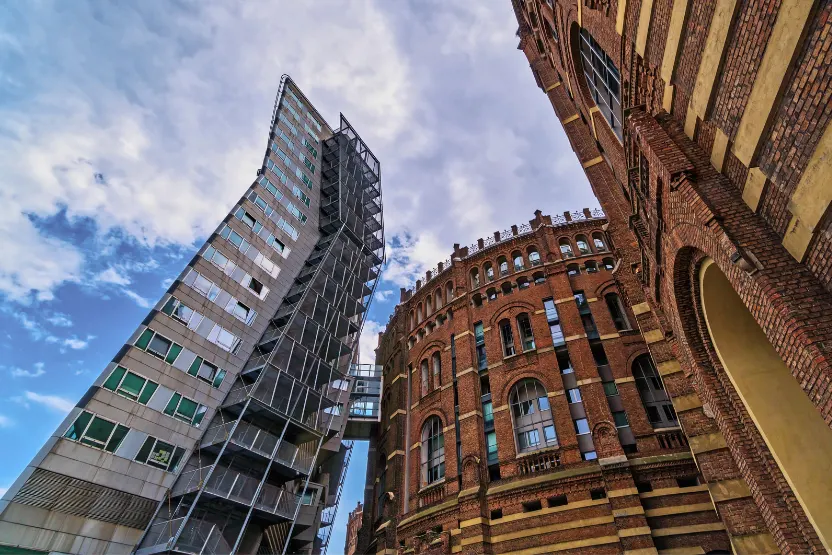
12. Gasometer Town
Once gas storage tanks, a collection of "buildings" has been transformed into residential and commercial spaces (a shopping mall, municipal archives, telecom companies, schools, and more).
It’s a unique area to explore if you love industrial architecture and want to see something you won't see elsewhere.
How to visit Gasometer Town
Much of Gasometer town is accessible to the public (for free), except for private residences, schools, and other private organizations, of course.
Where is Gasometer Town?
Gasometer Town is in Vienna, Austria at Guglgasse 12, 1110.
Vienna cafés and culinary delights
Vienna’s café culture is legendary. Whether you take coffee, tea, or something else, here are a few spots to soak up the atmosphere and taste signature treats unique to Austria.
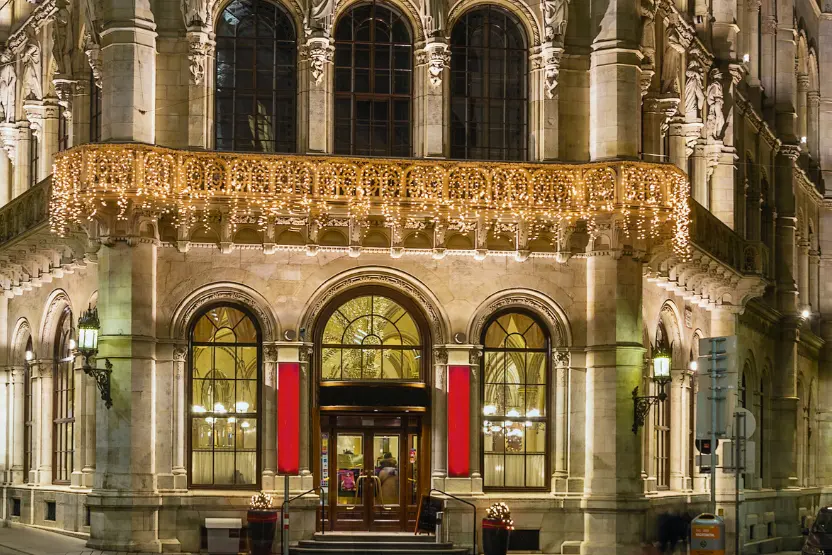
13. Café Central
For coffee with a touch of history, Café Central has been a gathering place for intellectuals and artists for over a century. Some notable "barflies" included Freud, Polgar, Trotsky, and more.
The cafe is inside the Palais Ferstel, a large, beautiful house inspired by Venetian architecture. Café Central offers both coffee and meals (such as Schnitzel), making it a great pit stop during your next adventure.
How to visit Café Central in Vienna
Café Central is located inside of the Palais Ferstel and you can visit with reservations or without (though seating depends on availability for walk-ins). The cafe is open daily, but hours differ on Sundays and holidays.
Where is Café Central?
Vienna, Austria inside the Palais Ferstel at Ecke Herrengasse / Strauchgasse 1010.
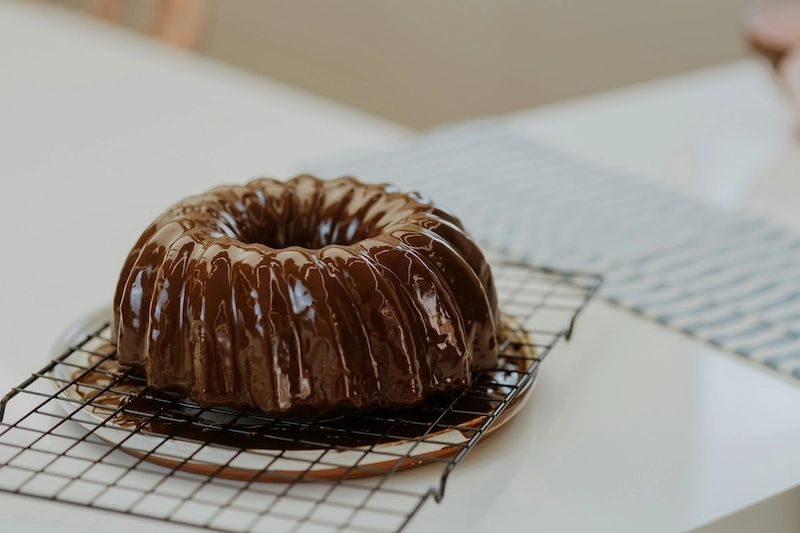
14. Vollpension: cake with a cause
Run by Vienna’s grandmas and grandpas, Vollpension is a café that combines traditional baking with social purpose. They aim to fight senior poverty and create a generational dialogue between “the young and the old”.
Where young and old get together to eat cake.
Try a homemade cake and enjoy the cozy, friendly vibe with Vienna locals.
How to visit Vollpension
There are two locations in Vienna (one in the 4th district and one in the 1st) and both accept reservations online.
Where is Vollpension?
Vollpension Schleifmühlgasse is located in Vienna, Austria at Schleifmühlgasse 16, A-1040.
Vollpension Johannesgasse is in Vienna, Austria at Johannesgasse 4A A-1010.
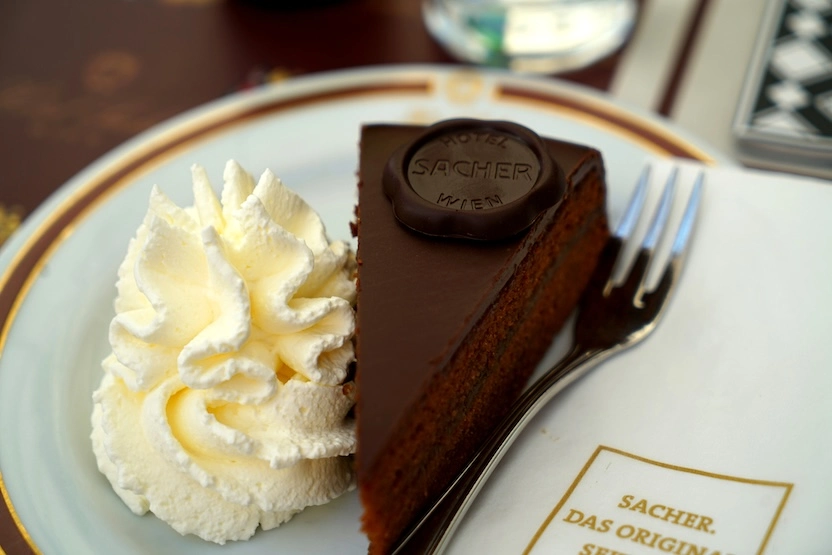
15. Try the famous sacher-torte at Café Sacher
Don’t leave Vienna without tasting its iconic dessert: the Sacher-torte. Café Sacher serves this rich treat with an authentic flair that transports you to another era, ensuring you get a real taste of Austria.
Sacher-torte is a dense chocolate cake with a thin layer of apricot jam and dark chocolate icing. The Sacher-torte at Café Sacher is considered to be the original, secret recipe (though this is debated from time to time).
How to visit Café Sacher
Located in the Hotel Sacher, it’s recommended to book a reservation for a table online as seats fill up quickly.
Where is the Café Sacher?
The Café Sacher is located within the Hotel Sacher in Vienna, Austria at Philharmoniker Str. 4, 1010.
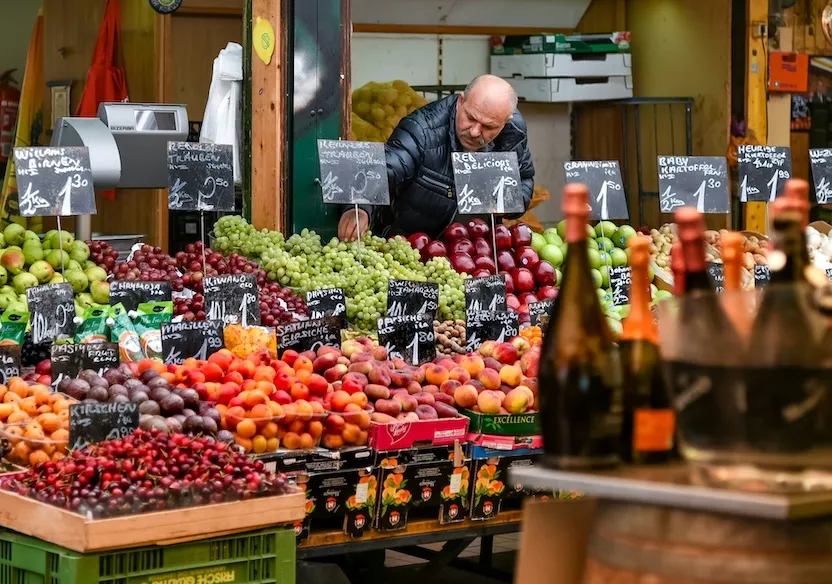
16. Naschmarkt: a local market
Naschmarkt is a large open-air food and drink market with local delicacies, international options, and bars and restaurants onsite.
This market has been running since the 1700s when it originated as a milk market outside of the city walls. Now, it's a large, daily market where locals get their produce and come together.
Whether you want an authentic grocery experience, to try the Austrian flavors, or simply stroll the bustling streets like a local, Naschmarkt is a must-see.
How to visit Naschmarkt
Naschmarkt is open daily and free to enter.
Where is the Naschmarkt?
The Naschmarkt in Vienna, Austria is located at Naschmarkt, 1060.
Vienna’s gardens and parks
Take a breather from the city buzz in one of Vienna’s beautiful green spaces – of which there are many.
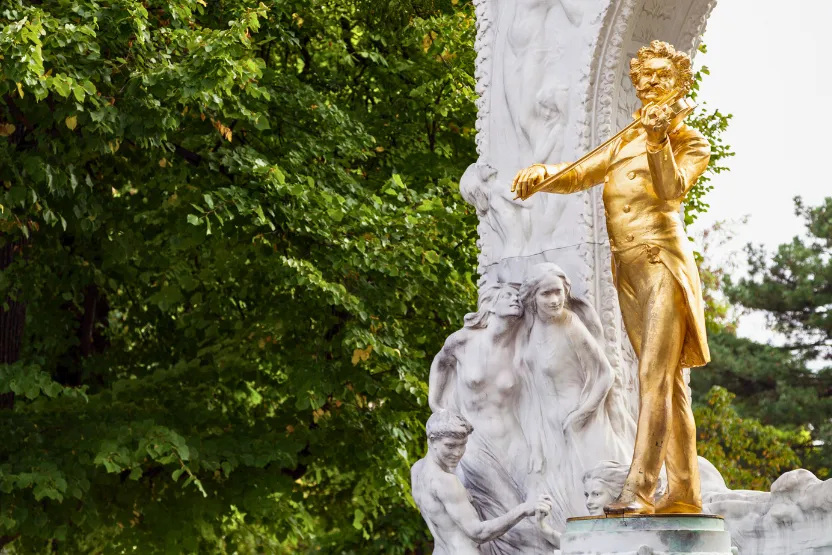
17. Stadtpark and the Hochstrahlbrunnen Fountain
The Stadtpark, or “City Park” offers both lush landscapes and iconic monuments, including the golden statue of Johann Strauss. Don’t miss the nearby Hochstrahlbrunnen Fountain as well – a visual treat by day or night.
This city park is divided into two sections and spans 28 acres, making it the perfect place for a stroll or a rest. In the park, you’ll also find a floral clock, thoughtful landscaping, and The Kursalon.
The Kursalon is now a music hall but was originally a place to drink mineral water that was said to possess healing properties.
How to visit Vienna’s Stadtpark
The Stadtpark is open daily and free to enter. Dogs are permitted and there is also a playground and public bathroom on site.
Where is the Stadtpark?
Stadtpark in Vienna, Austria at Parkring 1, 1010.
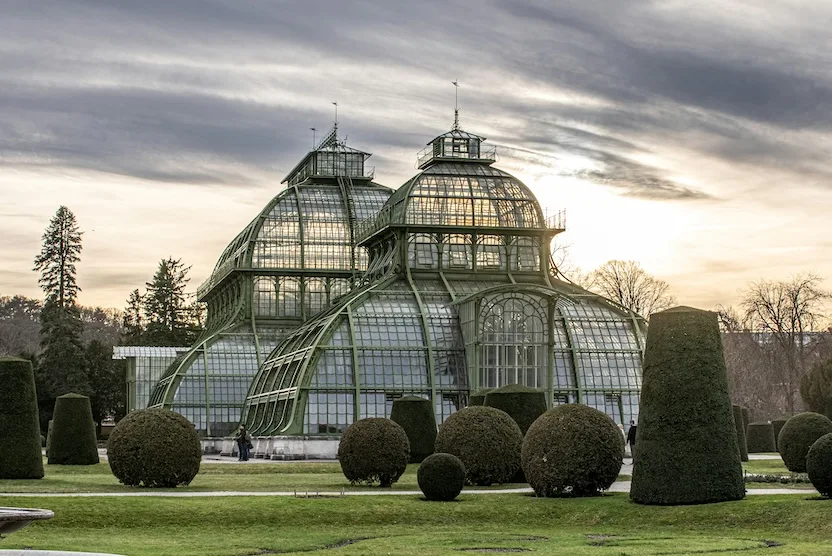
18 and 19. Palmenhaus and Schmetterlinghaus
Palmenhaus is an architectural masterpiece filled with exotic plants, while Schmetterlinghaus (the Butterfly House) next door is perfect for a tranquil escape among fluttering butterflies.
Palmenhaus is a glass greenhouse that is now a brasserie with food, coffee, and other drinks. Reservations are available online to dine in this picturesque setting.
Next door, the Butterfly House is an art nouveau building and home to 400 free-flying butterflies.
How to visit Palmenhaus and Schmetterlinghaus
Palmenhaus is open 7 days a week, but hours vary on the weekends. Reservations are available online to eat at the brasserie.
Schmetterlinhaus’s hours change depending on the season, but they are open Monday through Sunday and tickets are required in order to enter. They may be closed for specific events (such as private wedding ceremonies), so plan your visit ahead of time.
Where is Palmenhaus and Schmetterlinghaus?
Both Palmenhaus and Schmetterlinghaus are located at Burggarten 1, 1010 in Vienna, Austria.
Vienna’s cathedrals
Vienna’s churches each tell a unique story through their architecture and history. Whether you’re visiting for spiritual purposes or in admiration of the architecture, the following churches are awe-inspiring.
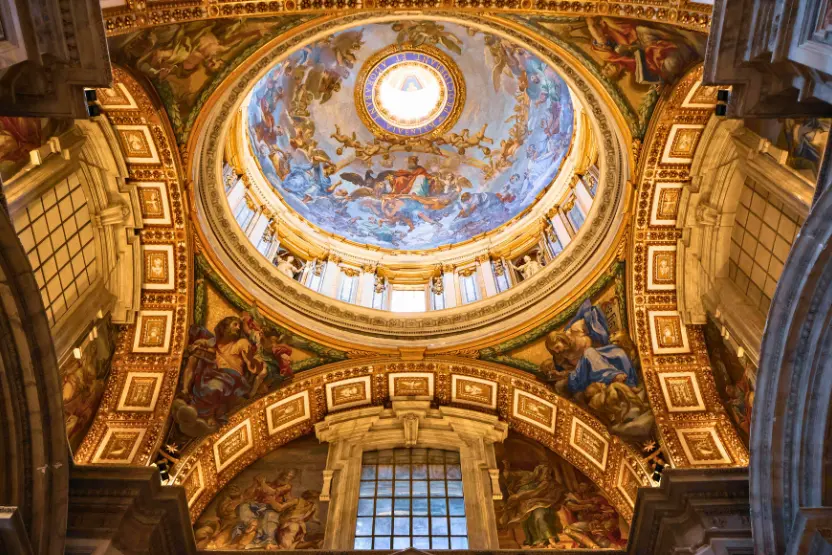
20. St. Peter’s Church (Peterskirche)
Peterskirche is an ornate Baroque church, known for its magnificent interior and serene atmosphere. It is one of the oldest (if not the oldest) churches in Vienna and is in the heart of the city.
Its unique dome and fresco draw tourists from all over the world, so don’t forget to look up once you're inside.
How to visit St. Peter’s Church (Peterskirche) in Vienna
St. Peter’s is open 7 days a week. The church offers regular orchestra concerts as well (which usually require tickets).
Where is St. Peter’s Church (Peterskirche)
Peterskirche can be found in Vienna, Austria at Peterspl. 1, 1010.
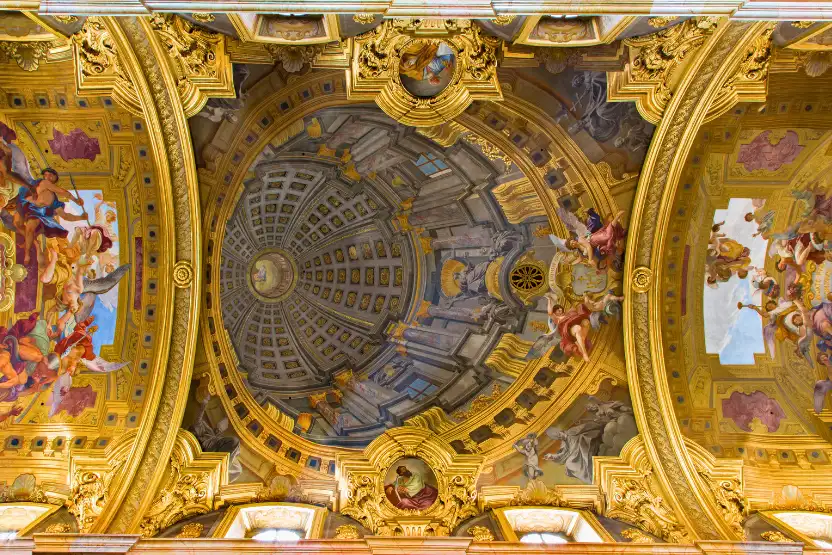
21. Church of the Jesuits
This hidden gem near the University of Vienna features elaborate ceiling frescoes, a pink-marbled interior, and golden warmth.
Consecrated in 1631, this church is dedicated to the assumption of the Virgin Mary into heaven. Occasionally, the church offers free orchestra concerts where seating is first come, first served.
How to visit the Church of the Jesuits in Vienna
The church of the Jesuits is free to visit and open 7 days a week. It may close during events. There are leaflets available in a variety of languages.
Where is the Church of the Jesuits in Vienna?
The Church of Jesuits can be found in Vienna, Austria at Dr. Ignaz Seipel-Platz 1, 1010.
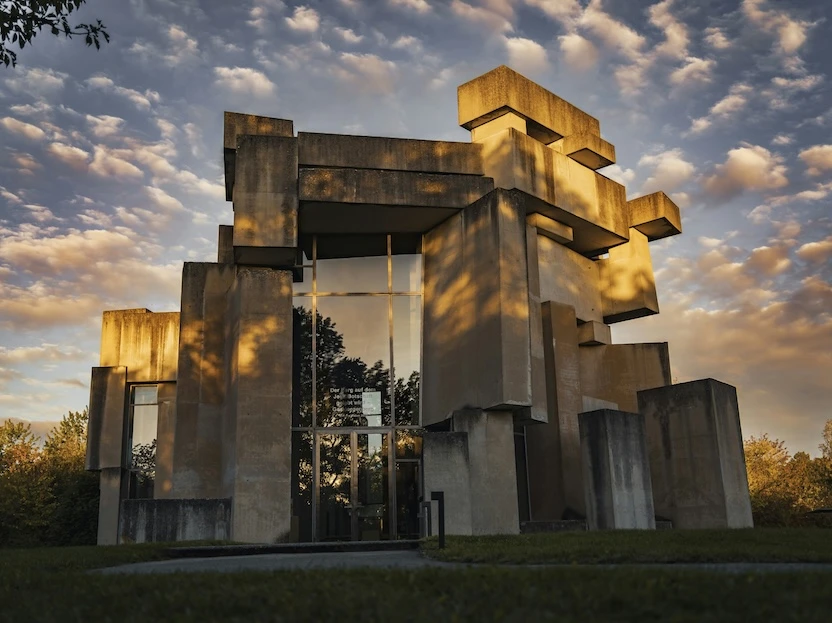
22. Wotruba Church: a modernist marvel
Vienna is home to one of the most unique Catholic churches you’ll find. Wotruba Church defies traditional church design, built from stacked concrete blocks that create a bold, original form.
Inspired by the Chartres Cathedral in France, but built in a Brutalist style, Wotruba is constructed of cement blocks and clear glass.
How to visit the Wotruba Church
The church is open on Saturdays and Sundays but may have closures when mass or other spiritual events are in session. It is free to enter unless otherwise noted.
Where is the Wotruba Church?
Vienna, Austria at Ottillingerplatz 1, 1230.
Unique things to do in Vienna
For those who like a touch of the unusual, Vienna offers fascinating experiences that go beyond the city’s postcard image.
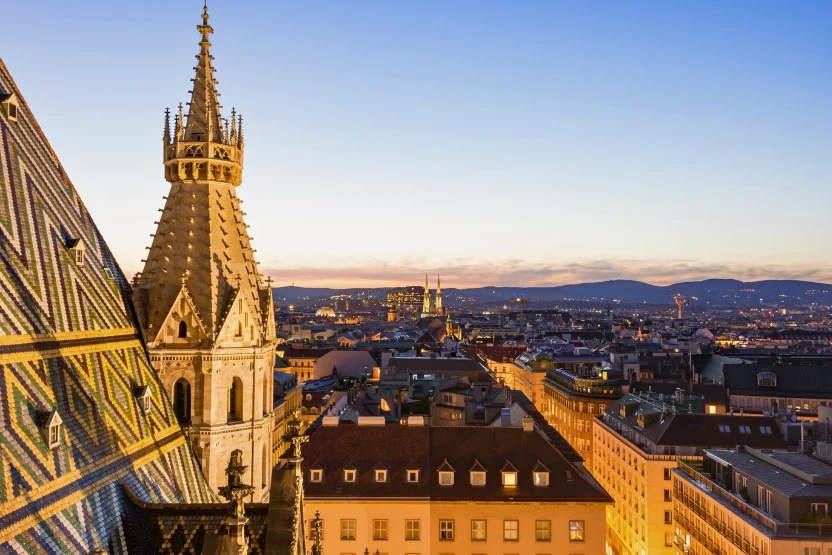
23. Stephansdom Crypt: the catacombs
Beneath St. Stephen’s Cathedral (listed above as a must-see) lies a crypt filled with royal tombs, ancient bones, and a bit of mystery.
The catacombs have around 30 rooms and are the final resting place for around 11,000 individuals.
(see details about visiting above as tickets are required).
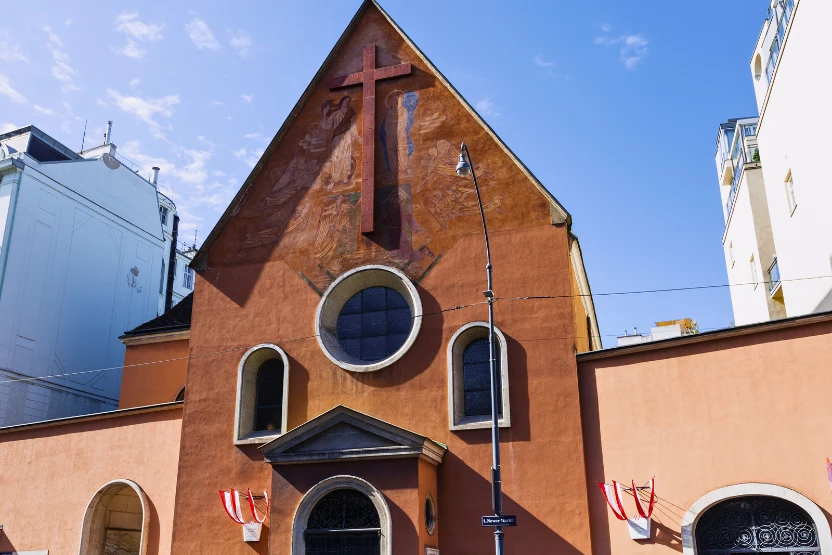
24. The Imperial Crypt: the resting place of Habsburg Royals
Underneath the Kapuzinerkirche (Capuchin Church), the Imperial Crypt holds the remains of Habsburg monarchs, offering a unique look at the family’s legacy.
The church itself is a must-see, with a fairly simple exterior and ornate interior.
How to visit the Kapuzinerkirche
The Capuchin church is normally open during the day for visitors but may close when events are taking place.
Where is the Kapuzinerkirche?
The Capuchin Church can be found in Vienna, Austria at Tegetthoffstraße 2 A-1010.
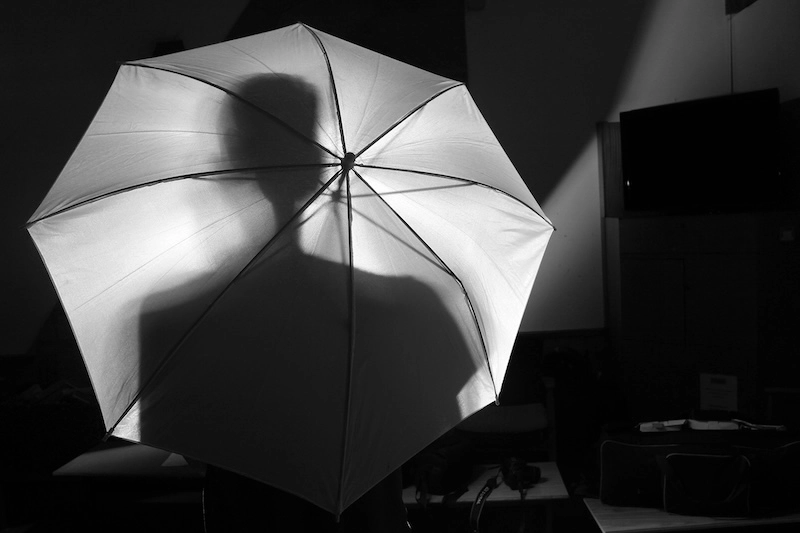
25. The Third Man Museum: escape into film noir
This niche museum celebrates “The Third Man” – an iconic film noir, offering insight into Vienna’s post-WWII era.
This museum has 3000 original exhibits and documents, 15 rooms, and more.
How to visit The Third Man Museum
The Third Man Museum is only open to the general public on Saturday afternoons and tickets are required.
With that being said, private tours are available at any time. Pricing can be found on their official website.
Where is The Third Man Museum?
Vienna, Austria at Pressgasse 25, 1040.
Shopping in Vienna
Vienna’s shopping scene has everything you need, from souvenir stores to stylish streets and unique finds.
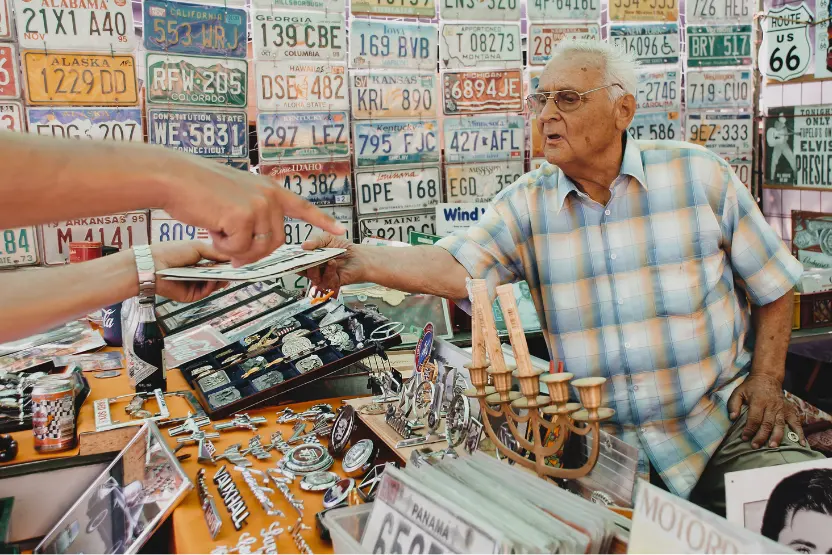
26. Burggasse: thrift and vintage shopping in Vienna
For unique vintage shopping, Burggasse (a district in Vienna), offers everything from retro clothing to quirky antiques. It’s perfect for travelers looking for something special to bring home.
From stationery and art books to locally-made goods, and even Vienna’s first vegan ice cream shop, this is a must-see neighborhood.

27. Flohmarkt Lager: treasure hunt at the flea market
This massive indoor flea market is ideal for treasure hunters looking for vintage pieces, antiques, and Vienna-specific memorabilia. It is the largest flea market in the city and spans multiple blocks, meaning there’s something to see everywhere you look.
Whether you’re hunting for fashion finds, books, vinyl, artwork, or anything else, you’ll find it at the Flohmarkt Lager.
How to visit the Flohmarkt Lager flea market in Vienna
This flea market is indoors and only open on Saturdays. It’s free to enter.
Where is the Vienna flea market?
Tivoligasse 20, 1120 in Vienna, Austria.
Related posts
Upcoming travels ? Get Insured !
Find the right insurance for your trip by using our powerful comparison tool!
Sarah Pardi - November 21, 2025
Sarah Pardi - November 20, 2025
Sarah Pardi - November 14, 2025
Sarah Pardi - November 13, 2025

